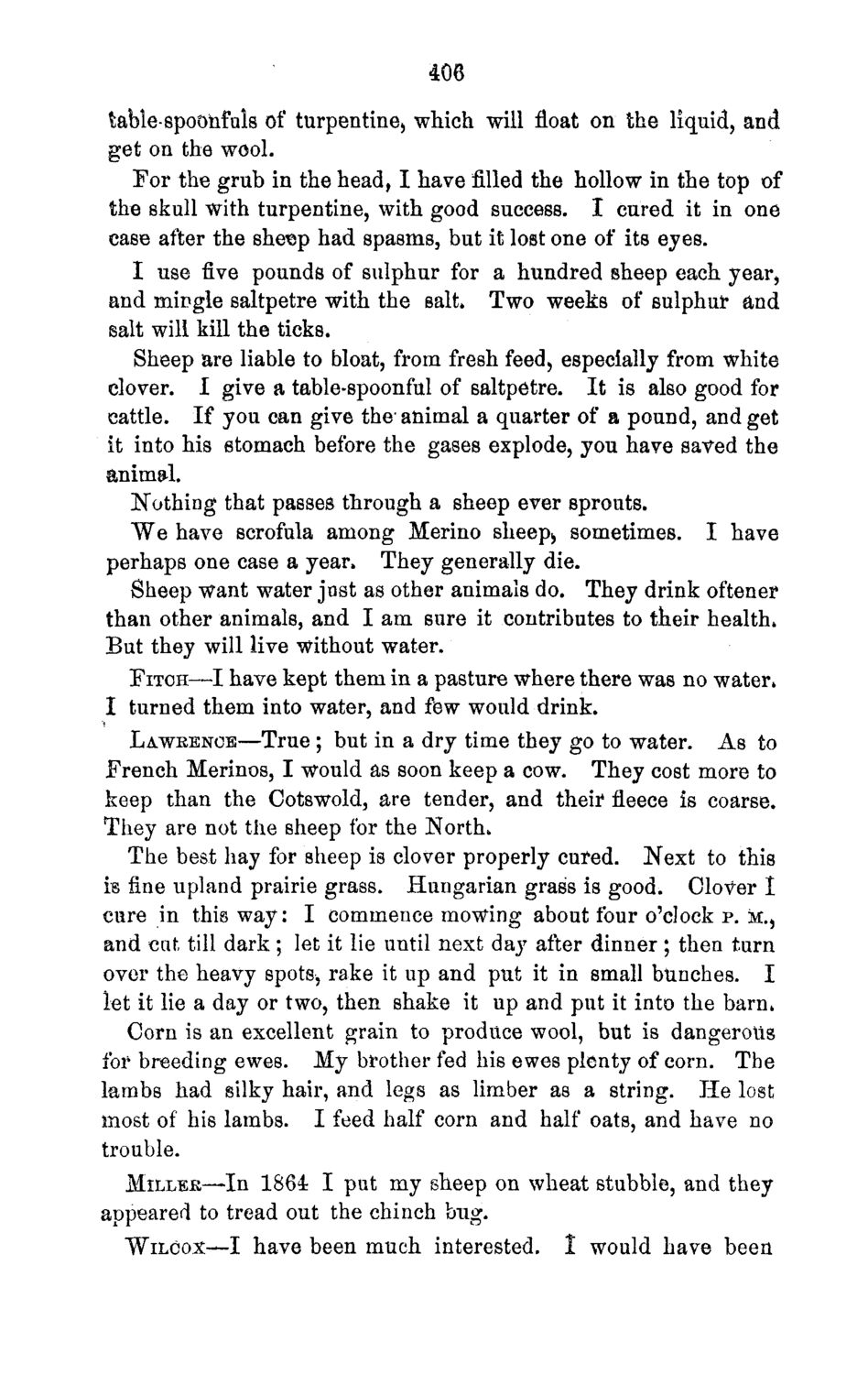| |
| |
Caption: Board of Trustees Minutes - 1870
This is a reduced-resolution page image for fast online browsing.

EXTRACTED TEXT FROM PAGE:
408 table-spoonfuls of turpentinej which will float on the liquid, and get on the wool. For the grub in the head, I have filled the hollow in the top of the skull with turpentine, with good success. I cured it in one case after the shetjp had spasms, but it lost one of its eyes. I use five pounds of sulphur for a hundred sheep each year, and mingle saltpetre with the salt* Two weeks of sulphur and salt will kill the ticks. Sheep are liable to bloat, from fresh feed, especially from white clover. I give a table-spoonful of saltpetre. I t is also good for cattle. If you can give the" animal a quarter of a pound, and get it into his stomach before the gases explode, you have saved the animal. Nothing that passes through a sheep ever sprouts. We have scrofula among Merino sheep> sometimes. I have perhaps one case a year* They generally die. Sheep want water jast as other animals do. They drink oftener than other animals, and I am sure it contributes to their health. But they will live without water. FITCH—I have kept them in a pasture where there was no water* I turned them into water, and few would drink. LAWRENCE—True ; but in a dry time they go to water. As to French Merinos, I would as soon keep a cow. They cost more to keep than the Cotswold, are tender, and theii* fleece is coarse. They are not the sheep for the North. The best hay for sheep is clover properly cured. Next to this is fine upland prairie grass. Hungarian grass is good. Clover I cure in this way: I commence mowing about four o'clock p. M., and cat till dark ; let it lie until next day after dinner ; then turn over the heavy spots, rake it up and put it in small bunches. I let it lie a day or two, then shake it up and put it into the barn. Corn is an excellent grain to produce wool, but is dangerous for breeding ewes. My brother fed his ewes plenty of corn. The k m b s had silky hair, and legs as limber as a string. H e lost most of his lambs. I feed half corn and half oats, and have no trouble. MILLER—In 1864: I put my sheep on wheat stubble, and they appeared to tread out the chinch bug. WILCOX—I have been much interested. 1 would have been
| |